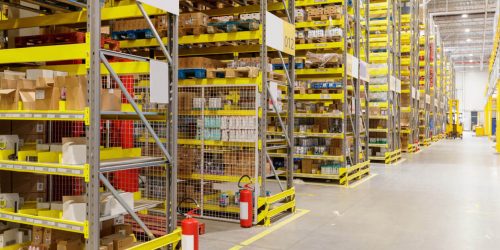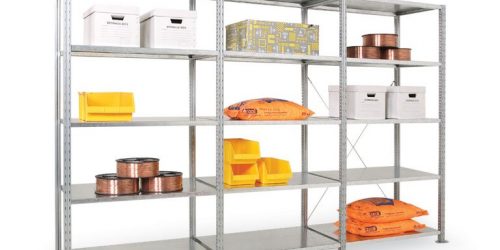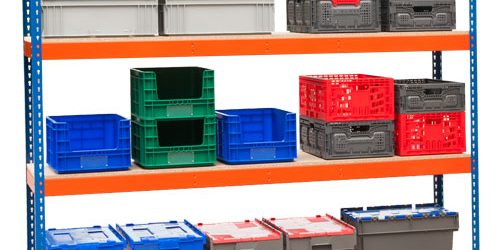What is warehouse racking?
Warehouse racking, also known as pallet racking is a storage system designed to store pallets in horizontal rows on multiple levels. Pallet racking offers many advantages to a business and it is the backbone of any efficient warehouse and distribution centre. Using warehouse racking can help maximise the available space in your warehouse and make the picking process more productive and stress free. Additionally, pallet racking will allow you to hold more stock, which in turn will help your business meet customer demand.
What are pallet racks made of?
Arranged in different ways, pallet racks keep your products organised and maximise the available space in your warehouse. But what are they made of? Pallet racks consist of vertical steel frames which are connected by horizontal steel beams. Two frames and the beams create a bay area where pallets can be added. The number of pallets and the weight your warehouse racking can hold will depend on the height of the pallet racking frames and the spacing of the beans. For example, Manutan’s heavy duty pallet racking frames have adjustable levels to suit your storage needs and each shelf can hold up to 3000kg UDL.
Different types of warehouse racking
There are several types of warehouse racking systems that are used in the UK for storage. Choosing the right one for your business will depend on what products you would want to store and the space you have available.
- Mobile Racking – this is a system where racks are built on a mobile base and are guided through fixed tracks on the floor.
- Drive-in and Drive Through Racking – both systems are ideal for high-density storage and maximising storage space through storing pallets back-to-back and floor-to-floor.
- Push Back Racking – this system allows you to store products that span 2-5 pallets. For example, when a new pallet is loaded onto the system, it pushed the next pallet back and when a pallet is unloaded, it is pushed to the front of the system.
- Wide Aisle Racking – this system is also known as adjustable pallet racking (APR) and it is considered highly versatile as it provides access to pallets without the need of specialist equipment.
- Flow Racking – this type of warehouse racking system allows for pallets to be loaded at the higher end and unloaded at the lower end, making the rotation of products automatic.
What to consider when purchasing and installing warehouse racking
The type of warehouse racking you purchase will depend on a few factors such as cost, available floor space, the ceiling height of your warehouse and the pallet type and size. The frequency of stock turnaround will define the access you will need, which is a fundamental element of any warehouse design. You will also need to ensure the safety of your staff. Therefore, opting for a pallet racking system that is manufactured to a high standard and it is installed by experts is so essential.
Pallet Racking by Manutan UK
Manutan offers a wide range pallet racking solutions as well as specialist shelving to help you choose the right warehouse racking system for your business. If you have any questions or require additional advice, our team of experts will be help.



